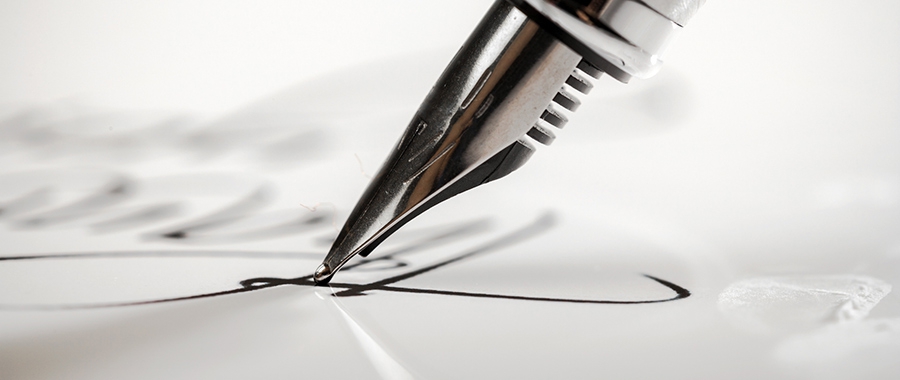The views expressed in our content reflect individual perspectives and do not represent the authoritative views of the Baha'i Faith.
One night in the fall of 1993 at Knox College, in Galesburg, Illinois, I reclined on a couch in the S.S. McClure Lounge, named after an alumnus who became a famous muckraking journalist.
I then slogged through a section of Don Quijote in the original old Spanish with the aid of a Spanish-English dictionary. My edition of the novel had a yellow cover with red lettering. To compose essays about it, I used a gray first-generation Macintosh laptop (floppy disks and no wireless back then!), with a slippery track ball. At the time, typing Spanish vowels with accent marks involved a complex exercise in computer science.
Profesora Isabel Livosky (may she rest in peace), taught an entire course on the novel and shepherded us through it, sometimes kicking and screaming.
El Quijote tells the story of the madcap escapades of a literary maven who reads so many tales of chivalry that he believes he’s a medieval knight. Amidst such delusion, Quijote, alongside his fictitious sidekick Sancho Panza, has a gamut of adventures, including, perhaps most famously, tilting at windmills–which he believes to be dragons.
A surprisingly modern theme in this almost medieval novel is the dynamic of text, narrative voice, and perspective. I never suspected that this lesson in Spanish literature would foreshadow my understanding of the Baha’i writings, which I discovered a couple of years later.
The Pen in Don Quijote
Studying Don Quijote introduced me to the idea of a supreme pen.
In the second part of the novel, Cervantes informs the reader that he’s not the real narrator of the story. That role belongs to one Cide Hamete Benengeli, a fictional Arab character (Cide meaning ‘Sir,’ Hamete meaning ‘one who is blessed’ and Benengeli, a Spanish pun for eggplant). Hamete later explains to the reader that he, in turn, isn’t the actual storyteller, but that a mystical pen commands the whole novel. Toward the end of the book, Hamete addresses this animated pen:
Here you shall rest, hanging from this rack by this copper wire, my goose-quill. Whether you are well or ill cut I know not, but you shall live long ages there, unless presumptuous and rascally historians take you down to profane you. But before they approach you, warn them as best you are able … “Careful, careful, worthless idlers. Let no one lay a hand on me. For this enterprise, O King, is reserved only for me …. For me alone Don Quijote was born, and I for him. He knew how to act, and I knew how to write.”
Cervantes’ inclusion of the pen was ingenious. After he authored the first part of Don Quijote, an imposter wrote a faux second part of the novel. Incensed, Cervantes authored the genuine second half of the book, with the pen eviscerating the imposter. As Isabel explained this sequence in a brightly-lit, orange-floored classroom on the first floor of George Davis Hall, I was gobsmacked. “Cervantes wants us to realize that the pen wrote this … the pen masterminds truth and reality!” I remember thinking. (I’m also guilty of being a presumptuous and rascally historian).
The Supreme Pen of Baha’u’llah
Years later, as I delved into the Baha’i writings more and more, I re-discovered the idea of a supreme pen.

Cut-reed pen and ink spoon used by Baha’u’lláh © Bahá’í International Community
In his multitudinous books, prayers, and tablets which form the crux of the Baha’i Faith, Baha’u’llah, its divine prophet and founder, often uses the metaphor of a master pen in the same manner as Cervantes. This passage about the divine pen as the prime mover of creation exemplifies this concept:
Through the movement of Our Pen of glory We have, at the bidding of the omnipotent Ordainer, breathed a new life into every human frame, and instilled into every word a fresh potency. All created things proclaim the evidences of this world-wide regeneration. This is the most great, the most joyful tidings imparted by the Pen of this wronged One to mankind. – Baha’u’llah, Tablets of Baha’u’llah, p. 84.
Baha’u’llah frequently discusses the pen as a self-animated object in the Baha’i writings, as shown in these two Baha’i prayers:
I was withered, Thou didst revive me with the heavenly stream of Thine utterance which hath flowed forth from the Pen of the All-Merciful … – Baha’u’llah, Baha’i Prayers, p. 20.
And at whatever time my pen ascribeth glory to any one of Thy names, methinks I can hear the voice of its lamentation in its remoteness from Thee, and can recognize its cry because of its separation from Thy Self … – Baha’u’llah, Baha’i Prayers, p. 124.
On the soul and its survival after death:
The movement of My Pen is stilled when it attempteth to befittingly describe the loftiness and glory of so exalted a station … – Baha’u’llah, Gleanings from the Writings of Baha’u’llah, p. 156.
These passages are a microcosm of what Baha’u’llah states about the pen. In fact, my own unscientific research at reference.bahai.org revealed at least twenty references to the “Supreme Pen,” that instrument of God’s revelation. Only small portion of Baha’i writings have been translated into English from the original Arabic and Persian; hence, we’ll likely be learning more about the pen in the Baha’i writings for some time.
Retrospect
However, I never would have fathomed this idea of a master pen – whether in El Quijote or the Baha’i writings – without Isabel Livosky’s guidance.
She was a consummate educator. Whatever book or poem we grappled with, she taught us that language is culture, that art imitates life, and that hard work is fundamental to fully appreciating literature (hence my battle with the Macintosh over accent marks). She empathized with wigged-out college students, and once told me, “Sometimes, you need time to stare at the wall.” Isabel always had time for us, even teaching class over a home-cooked dinner at her house on a Sunday evening. Such generosity and sympathy are key lessons for anyone, regardless of our spiritual paths.
Years after graduating from Knox, I bought a figurine of Don Quijote and Sancho Panza. Today, it rests in my kid’s room–testimony to the All-Mighty pen.
You May Also Like
Comments

















connections and shared principles
among things. Staring at the wall
is some of the best spent time!